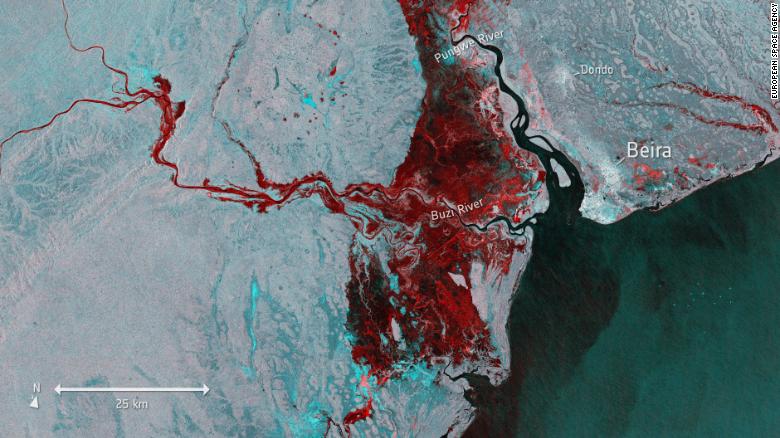 |
| Cyclone Idai as represented by the European Space Agency |
Cyclone Idai is one of many extreme weather events.
Storms on this scale are not a new thing. But we have to expect more storms of increased severity as the planet heats up.
One of the main drivers of weather is transfers of energy between the atmosphere and the oceans.
One of the lesser-known facts about climate change is that 90% of the extra energy being captured by greenhouse gases is in the oceans.
While warming of the surface is alarming that is, so as to speak, only the tip of the iceberg.
Here in South Africa, we see a limited effect – the temporary loss of electricity from Mozambique’s Cahora Bassa hydroelectric power plant. But for our neighbours, this is a massive calamity.
Can we still stand by quietly while the forces of fossil fuel propel our planet towards the risk of a major extinction event?
The risk is not theoretical and distant – it is real and on our own doorstep, with major impacts not only in Mozambique but in Malawi and Zimbabwe.
So why is climate change not a big issue in the 2019 South African elections? Instead, we hear a ramping up of xenophobic rhetoric – and that is before we have a significant number of climate refugees caused in part by our own addiction to fossil fuels.
